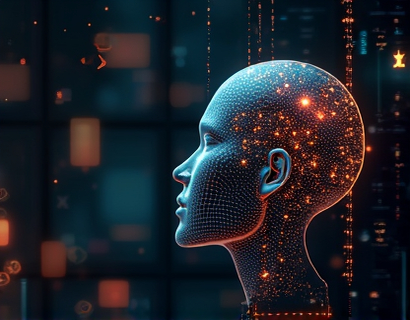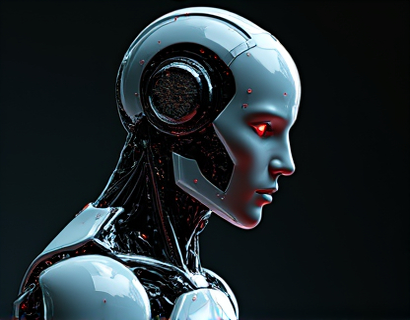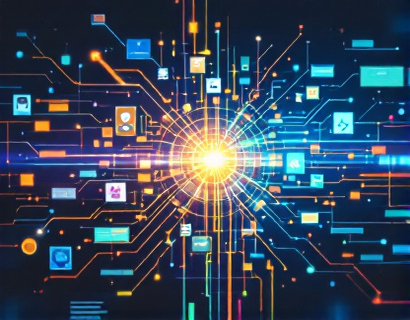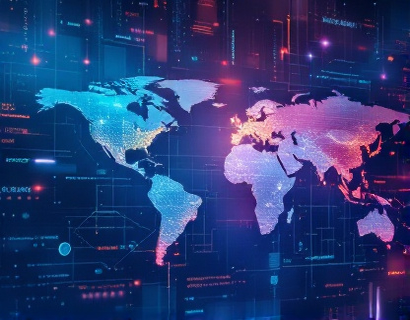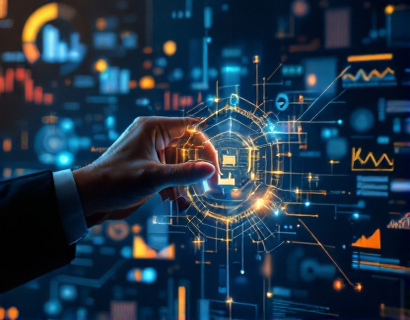Revolutionizing Productivity in the Digital Age: The Synergy of Crypto and AI
The intersection of cryptocurrency and artificial intelligence (AI) is giving rise to a new era of digital solutions that are transforming the way tech innovators and digital visionaries approach productivity. This synergy is not just about combining two cutting-edge technologies; it's about creating a powerful ecosystem that streamlines tasks, enhances efficiency, and opens up new possibilities for tech leaders and early adopters. In this article, we will explore how the integration of crypto and AI is revolutionizing productivity and what this means for the future of digital innovation.
The digital landscape is rapidly evolving, and tech innovators are constantly on the lookout for tools and technologies that can give them a competitive edge. Cryptocurrency, with its decentralized and secure nature, has emerged as a key player in this evolution. Meanwhile, AI is transforming industries by automating complex tasks, providing insights from vast amounts of data, and enhancing decision-making processes. When these two technologies are combined, the potential for innovation and productivity gains is immense.
Enhancing Task Automation with AI and Crypto
One of the most significant ways that the combination of AI and crypto is impacting productivity is through task automation. AI-driven algorithms can analyze patterns, predict outcomes, and execute tasks with a level of precision and speed that surpasses human capabilities. In a crypto-enhanced environment, these tasks can be executed securely and transparently, without the need for intermediaries. For instance, smart contracts on blockchain platforms can automate contractual obligations, ensuring that all parties adhere to the agreed terms without the need for manual oversight.
Consider a scenario where a tech company needs to manage a complex supply chain involving multiple parties across different countries. Traditional methods would involve numerous intermediaries, each adding a layer of complexity and potential for error. With AI and crypto, this process can be streamlined. AI can optimize the supply chain in real-time, predicting bottlenecks and adjusting logistics accordingly. Smart contracts can then automate payments and ensure that all transactions are recorded on a secure blockchain, providing a transparent and tamper-proof record.
Data-Driven Decision Making
AI's ability to process and analyze vast amounts of data is a game-changer for productivity. In a crypto-enhanced ecosystem, this data can be securely stored and accessed, providing a robust foundation for data-driven decision-making. For tech innovators, this means having access to real-time insights that can inform strategic decisions, optimize operations, and drive innovation.
For example, a startup developing a new AI-powered application can leverage AI to analyze market trends, customer behavior, and competitor activities. This data can be stored on a blockchain to ensure its integrity and security. AI algorithms can then process this data to identify patterns and opportunities, allowing the startup to make informed decisions about product development, marketing strategies, and resource allocation. The use of crypto ensures that all data transactions are secure and verifiable, reducing the risk of data breaches and fraud.
Decentralized Collaboration and Innovation
The decentralized nature of blockchain technology fosters a collaborative environment where innovators can work together without the constraints of traditional centralized systems. AI can facilitate this collaboration by providing tools that enhance communication, project management, and idea generation. In a crypto-enhanced platform, these tools can be powered by decentralized applications (dApps) that operate on blockchain networks.
Imagine a community of developers and entrepreneurs working on a shared project. AI-powered chatbots and virtual assistants can manage communication, schedule meetings, and even suggest collaborative ideas based on the project's goals and the team's expertise. Smart contracts can automate the distribution of rewards and incentives, ensuring that all contributors are fairly compensated in cryptocurrency. This not only streamlines the collaboration process but also aligns the interests of all participants, fostering a more cohesive and productive environment.
Enhancing Security and Trust
Security and trust are paramount in any digital ecosystem, and the combination of AI and crypto addresses these concerns effectively. AI can detect and mitigate security threats in real-time, while blockchain provides an immutable and transparent ledger of all transactions. This dual approach ensures that data and assets are protected from unauthorized access and tampering.
For instance, in a decentralized marketplace for digital assets, AI can monitor transactions for suspicious activity and flag potential fraud. Blockchain ensures that all transactions are recorded in a transparent and tamper-proof manner, providing a clear audit trail. This level of security and transparency builds trust among users, encouraging more widespread adoption and collaboration.
Optimizing Resource Allocation
AI and crypto can also optimize resource allocation, ensuring that computational power, storage, and other resources are used efficiently. In a traditional setup, resource allocation is often centralized and managed by a single entity, which can lead to inefficiencies and bottlenecks. In a decentralized crypto-AI ecosystem, resources can be dynamically allocated based on real-time demand and availability.
For example, a network of decentralized computing nodes can be leveraged to process complex AI tasks. AI algorithms can dynamically assign tasks to the most suitable nodes based on their current load and resource availability. This not only optimizes the use of computational power but also reduces energy consumption, making the process more sustainable. Additionally, cryptocurrency can be used as a token to incentivize node operators, ensuring that they are rewarded for their contribution to the network.
Fostering Financial Inclusion
The integration of crypto and AI can also play a significant role in fostering financial inclusion. Traditional financial systems often exclude individuals and businesses in underserved regions due to high costs and complex regulations. Crypto and AI can democratize access to financial services by providing decentralized and low-cost solutions.
AI-driven financial platforms can offer personalized financial advice, credit scoring, and lending services based on a user's digital footprint. These platforms can operate on blockchain networks, ensuring transparency and security. Cryptocurrency can serve as a medium of exchange, allowing users to participate in the global economy without the need for traditional banking infrastructure. This not only enhances financial inclusion but also empowers individuals and small businesses to innovate and grow.
Challenges and Considerations
While the potential benefits of combining AI and crypto are substantial, there are also challenges and considerations that need to be addressed. One of the primary concerns is the regulatory landscape. Cryptocurrencies and AI are still relatively new and evolving fields, and regulations vary widely across different jurisdictions. Tech innovators must navigate these regulations carefully to ensure compliance and avoid legal pitfalls.
Another challenge is the technical complexity involved in integrating AI and crypto solutions. Developing robust and secure systems requires expertise in both domains, which can be a barrier for some organizations. However, as the ecosystem matures, more user-friendly tools and platforms will emerge, making it easier for tech innovators to leverage these technologies.
Conclusion
The synergy of AI and crypto is revolutionizing productivity in the digital age, offering tech innovators and digital visionaries powerful tools to streamline tasks, enhance efficiency, and drive innovation. From task automation and data-driven decision-making to decentralized collaboration and financial inclusion, the possibilities are vast. As the ecosystem continues to evolve, the integration of these technologies will play a crucial role in shaping the future of digital innovation. Embracing this synergy can provide a significant competitive advantage, enabling tech leaders to stay ahead in an increasingly complex and competitive landscape.





